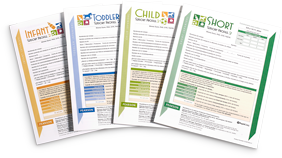€77.15
- Child Sensory Profile 2 Description
- Child Sensory Profile 2 Pdf
- Child Sensory Profile 2 User 27s Manual 2017
- Child Sensory Profile 2 User 27s Manual Pdf
Description
Product Description
The Sensory Profile™ 2 family of assessments provides you with standardised tools to help evaluate a child’s sensory processing patterns in the context of home, school and community-based activities.
Child Sensory Profile 2 Description

These significantly revised questionnaires evaluate a child’s unique sensory processing patterns from a position of strengths, providing deeper insight to help you customise the next steps of intervention. The forms are completed by caregivers and teachers, who are in the strongest position to observe the child’s response to sensory interactions that occur throughout the day.
Recommended Uses
Children with autism are frequently observed to experience difficulties in sensory processing. This study examined specific patterns of sensory processing in 54 children with autistic disorder and their association with adaptive behavior. Model-based cluster analysis revealed three distinct sensory processing subtypes in autism. These subtypes were differentiated by taste and smell sensitivity. –Infant Sensory Profile 2: 5 to 10 minutes –Toddler Sensory Profile 2: 10 to 15 minutes –Child Sensory Profile 2: 15 to 20 minutes –Short Sensory Profile 2: 5 to 10 minutes –School Companion (SP2): 15 minutes. Scoring –Manual Scoring: Approx. 15 minutes –Web-based administration and scoring: 0.
The Sensory Profile 2 helps you:
- Identify and document how sensory processing may be contributing to or interfering with a child’s participation at home, school, and the community
- Contribute valuable information to a comprehensive assessment of the child’s sensory strengths and challenges in context
- Develop effective treatment plans, interventions, and everyday remediation strategies.

Using paper and pencil or online administration with Q-global, caregivers and teachers report on the child’s response to sensory events throughout the day using the relevant forms.
- Infant Sensory Profile 2: Caregiver questionnaire for babies from Birth–6 months
- Toddler Sensory Profile 2: Caregiver questionnaire for toddlers ages 7–35 months
- Child Sensory Profile 2: Caregiver questionnaire for children ages 3–14 years
- Short Sensory Profile 2: Caregiver questionnaire for children ages 3–14 years. Items on this questionnaire, which are drawn from the Child Sensory Profile 2, are highly discriminating and provide quick information for screening and research programs
- School Companion Sensory Profile 2: Teacher questionnaire for students ages 3–14 years.
Each form includes some combination of Sensory System, Behavioural, and Sensory Pattern scores:
- Sensory System scores: Auditory, Visual, Touch, Movement, Body Position, Oral.
- Behaviour scores: Conduct, Social-Emotional, Attentional.
- Sensory Pattern scores: Seeking, Avoiding, Sensitivity, Registration.
- School Factor scores: School Factor 1 (Supports), School Factor 2 (Awareness), School Factor 3 (Tolerance), School Factor 4 (Availability) (School Companion Sensory Profile 2 only).
Features & benefits
- Combined questionnaire and score forms, no need to purchase separate forms
- Expanded age range in one kit—The Child, Short, and School Companion forms age increased to 14:11, giving you more flexibility in assessing preteens and younger teens
- Shorter questionnaires — The Infant, Child, School Companion, and Short form caregiver and teacher questionnaires are briefer. The Toddler questionnaire increased by just a few items, reflecting increased understanding of sensory processing at this age
- Updated content and greater item consistency between forms
- No need to purchase separate kits with Infant, Toddler, Child, Short, and School Companion forms combined in to one manual
- Provides cuts scores with optional percentiles for an additional level of analysis
- Online or paper-and-pencil administration and scoring to fit with your workflow
- Wide range of studies between children with and without disabilities to ensure discrimination with vulnerable populations
- Enables theory-based decision-making because principles of neuroscience, sensory processing, strengths-based approaches, and ecological models are imbedded in the items and scoring structure
- Presents a comprehensive view of a child’s responses across settings, which helps facilitate discussion between families and professionals about strategies that support the child’s participation in all contexts
- Enhanced reporting options to link findings from the questionnaires to participation at home, in school, and the community
- Offers you an evidence-based tool that is built on extensive evidence from the first editions of the Sensory Profile™, including international research demonstrating the usefulness of data
- Enhanced reporting options to link findings from the questionnaires to participation at home, in school, and the community.
Child Sensory Profile 2 Pdf
Scoring & Reporting
Enhanced online scoring and reporting options include:
Child Sensory Profile 2 User 27s Manual 2017
- Assessment and Planning Report: To link the findings from the questionnaires to participation at home, in school, and in the community.
- Multi-rater Report: Facilitating sensory processing assessment in context.
- Manual entry: Option to use paper forms to administer the questionnaires, then use the Q-global system to score and generate reports.
Psychometric Information:
- Data was collected on a nationally representative US sample of 1791 children from 2012 to 2013
- 774 children with disabilities participated in clinical validity studies including Autism and Attention Deficit Hyperactivity Disorder (ADHD)
- Validation studies with gold standard measures of behaviour, adaptive behaviour and participation
*Note: Sensory Profile 2 has been developed with US normative data. Users should interpret assessment findings accordingly.
Child Sensory Profile 2 User 27s Manual Pdf
Complete Set €312.30 & Vat